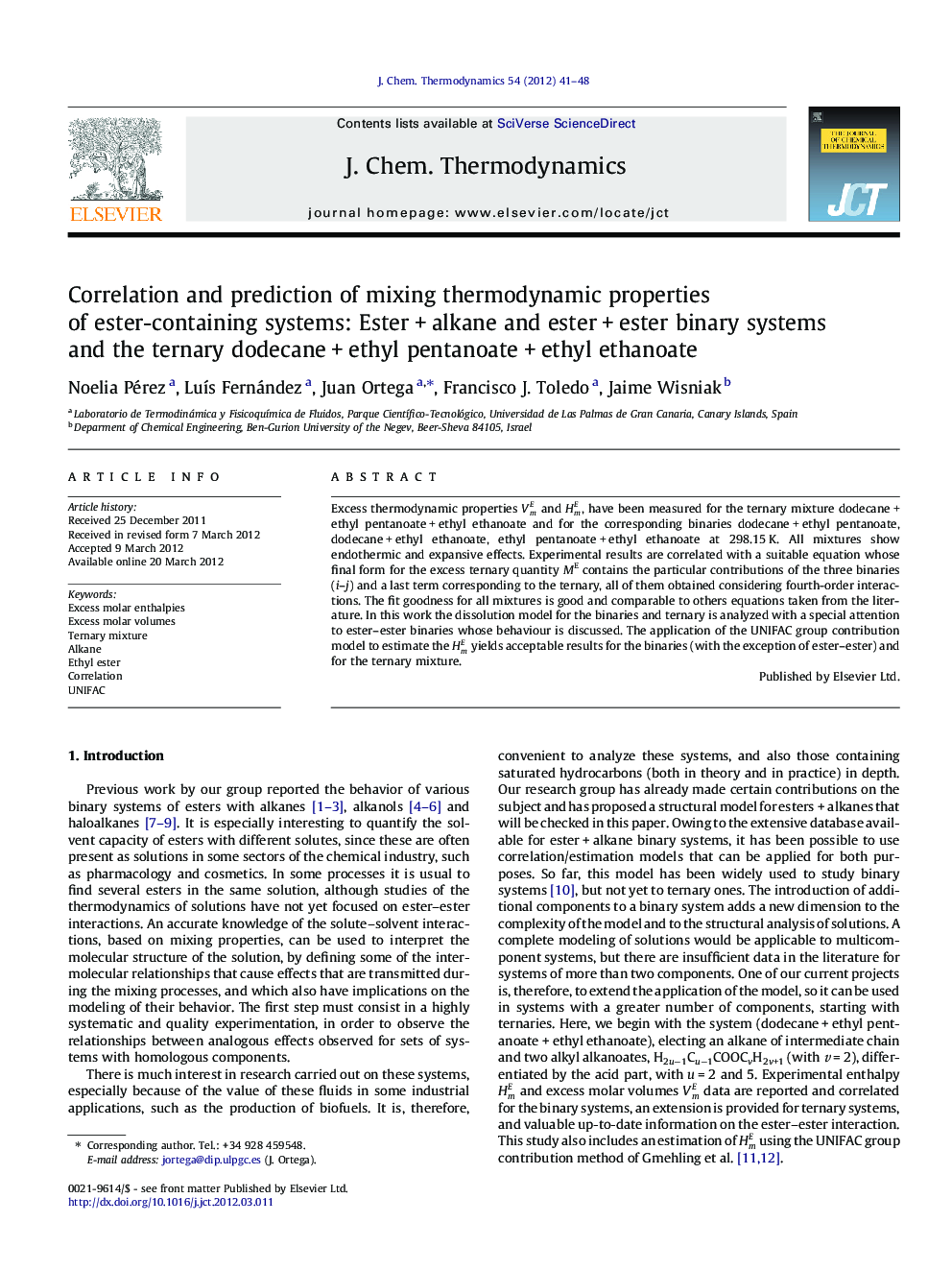| Article ID | Journal | Published Year | Pages | File Type |
|---|---|---|---|---|
| 215644 | The Journal of Chemical Thermodynamics | 2012 | 8 Pages |
Excess thermodynamic properties VmE and HmE, have been measured for the ternary mixture dodecane + ethyl pentanoate + ethyl ethanoate and for the corresponding binaries dodecane + ethyl pentanoate, dodecane + ethyl ethanoate, ethyl pentanoate + ethyl ethanoate at 298.15 K. All mixtures show endothermic and expansive effects. Experimental results are correlated with a suitable equation whose final form for the excess ternary quantity ME contains the particular contributions of the three binaries (i–j ) and a last term corresponding to the ternary, all of them obtained considering fourth-order interactions. The fit goodness for all mixtures is good and comparable to others equations taken from the literature. In this work the dissolution model for the binaries and ternary is analyzed with a special attention to ester–ester binaries whose behaviour is discussed. The application of the UNIFAC group contribution model to estimate the HmE yields acceptable results for the binaries (with the exception of ester–ester) and for the ternary mixture.
► Excess enthalpies and volumes were measured for ester–ester–alkane. ► Mixing behaviour for ester–ester, ester–alkane and ester–ester–alkane are analyzed. ► Correlations with a new polynomial model reproduce well the mixing properties. ► UNIFAC predictions for hE result acceptable excluding the ester–ester mixtures.
